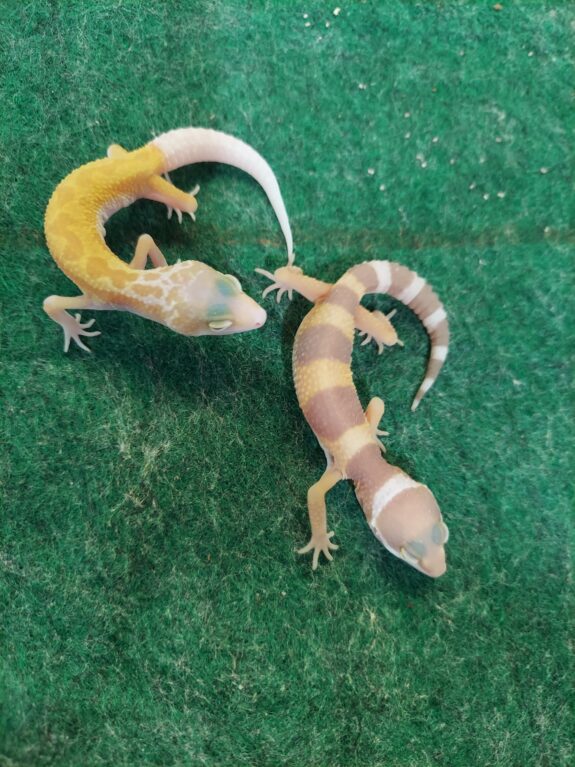
Geckos are a widely distributed species of carnivorous lizards that are found on every continent except Antarctica. The family Gekkonidae is the largest group of lizards, including almost 1,500 different lizard species. There is a lot to know about the geckos. In this article, we will discuss the evolutionary history of geckos. This incredible group of lizards is ectothermic like other reptiles. These lizards are unable to produce metabolic heat, and therefore they need heat from outside to keep themselves warm.
Geckos are extremely unique reptiles
Geckos are famous for their distinctive mating calls. The interesting fact about their vocalization is that every species produces a different sound that attracts pet keepers throughout the world. The chrematistic sounds of geckos include chirping and clicking sounds during their social interactions. However, some geckos are known for their loud mating calls while some others are known for making hissing sounds in the time of danger.
Over time, eleven different hierarchies of gecko evolved adhesive toe pads to climb smooth surfaces. However, nine of these hierarchies lost their adhesive abilities because of unknown reasons. Sit back! And know a lot more about the evolutionary history of geckos.
What were geckos like millions of years ago?
The evolutionary history of a species lets us learn many interesting facts about the specific organism. In order to know about the past life of geckos, we have a study conducted on a gecko’s fossil aged around 100 million years ago. The gecko was then trapped in the amber and remained preserved for 100 million years. When we look at that fossil, the small foot of the gecko still shows the tiny sticky lamellae that look like hairs with the ability to stick. These incredible tiny lamellae gave birth to modern-day sticky toes of geckos. Only because of these incredible sticky pads are geckos able to walk on vertical walls, even upside down.
Counting the number of lamellae on foot, scientists estimated that the gecko was a juvenile of an adult of about a foot long. There may have been other large species of geckos at that time. The fossil found in the regions of Myanmar tells us that geckos have been in Asia for 100 million years. And for 100 million years, they have evolved the bizarre foot structure that makes them an incredible species worldwide. Scientists are trying to mimic the dry adhesive ability of geckos, and there has been recent development by the University of California. They have developed a new anti-sliding adhesive that may be used in robots to climb in the future.
What are some genetic relatives of geckos?
Geckos belong to the infraorder Gekkota. The infraorder Gekkota contains seven families that are genetically related to each other – there present a lot of common genetic similarities among all the species of these families. Following are the families that are genetically related to geckos.
1 Pygopodidae
These are commonly known as legless lizards or snake lizards. Members of Pygopodidae have their legs either reduced or absent. Like snakes, they have long slender bodies with distinct eyes; unlike snakes, they possess holes for external ears, and their tongue is flat and unforked.
2 Carphodactylidae
The members of this family are commonly known as southern padless geckos. They possess well-developed limbs, but most of the DNA resembles the members of Pygopodidae. They are often called the sister group of Pygopodidae, and they contain the least number of species compared to other families of geckos. On the contrary, they still possess diverse habits.
3 Diplodactylidae
The members of this family are the most diverse geckos in this world. They are widespread species of geckos and are recently split into several new genera. These families and the other four families of geckos are genetically associated with each other.

How have geckos evolved to fit their environment?
Geckos are an amazing group of species that possess wonderful features. They have spread all over the world only because of their amazing survival skills. Over the course of time, geckos have evolved several techniques to fit in the environment. Among those techniques, a few are mentioned here.
Defense mechanisms
In the wild, the most important survival skill is the ability of a species to defend itself from potential predators. Geckos have adapted more than one feature to defend themselves. They have a characteristic appearance to disguise in the environment. Unlike other animals, they can change their appearance according to the environment and can camouflage. Most importantly, they can release the tail when a predator catches.
Movements
The other unique quality of geckos is their ability to move quickly and climb almost everywhere. Their tail possesses tiny hair-like sticky outgrowths that are only some microns apart. These sticky hair-like outgrowths hold the surface so strong that they can grab even the smallest of holds.
Other adaptations include the thick skin that helps them to survive harsh environments. They live in dry regions where they can easily withstand hot and harsh climates. They have a storehouse in their tail where they can store ample food. They frequently face the situation of famine in the desert when their tail storage keeps them alive.
How have geckos changed since they have become pets?
Domestication can bring a lot of changes in some species and a few minor changes in some other species. The process of domestication differs among different species.
Domestication is largely affected by the process of selection. The one change that we can predict in geckos is the physical feature. We have artificially selected and kept only those geckos that fascinate us with their physical features. The rest of the geckos were left at the mercy of nature. They may have been extinct from the world. This is how domestication affects species using the selection process as its tool.
Final thoughts
Geckos possess wonderful features that are the reason for attention among the non-conventional pet keepers and people worldwide. Gecko lizards possess ample traits that satisfy the aesthetical needs of people, and because of this, they are among the most loved non-conventional pets in the world.



